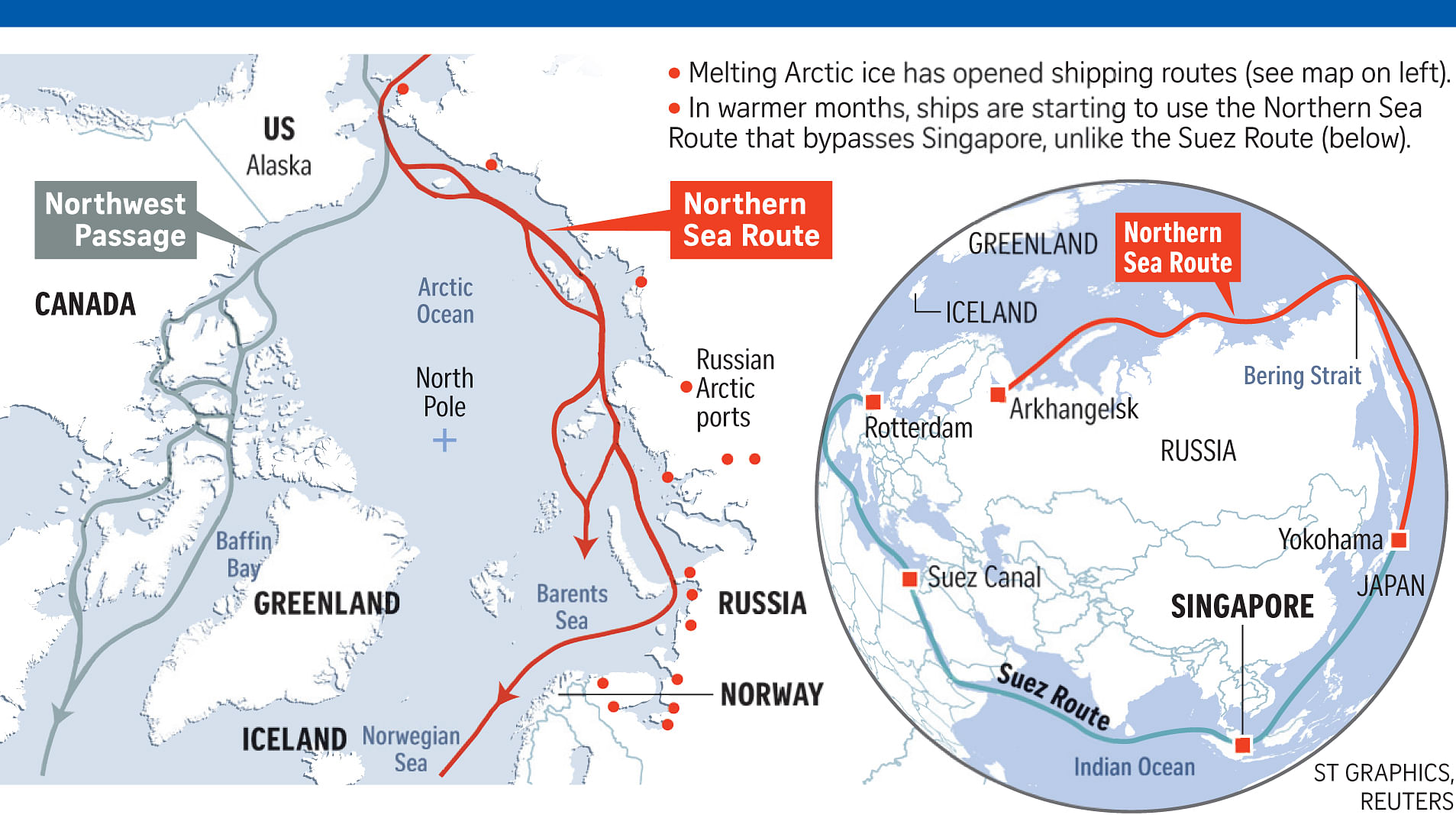Climate change
Global warming, which causes sea ice in the Arctic to melt, makes low-lying Singapore especially vulnerable to climate change.
But steps have been taken to fortify the country. Since 2011, the Government has raised the minimum level of newly reclaimed land by an additional metre, to 2.25m above the highest recorded tide levels.
There are also shore protection works covering more than 70 per cent of Singapore's coastline to guard against erosion.
Economic potential
The current world demand for oil is more than 34 billion barrels a year, but the Arctic is estimated to hold the equivalent of 426 billion barrels of oil. To extract it, specialised products like Arctic-grade drilling rigs are needed.

Experts say firms could invest as much as US$100 billion (S$142 billion) in the area in the next 10 years.
Singapore companies in the maritime industry could tap this.
Keppel Offshore & Marine, for instance, has hitherto delivered 10 ice-class vessels, which can cut through solid ice that is more than 1.7m thick and operate in temperatures as low as -45 deg C.
It is also collaborating with drilling contractors to develop the world's first Arctic-grade, environmentally friendly "green" rig.
Impact on shipping industry
Melting Arctic ice has widened a channel - the Northern Sea Route between Russia and Norway - that enables ships to deliver European oil and products to North-east Asia in a much shorter time. During the warmer summer months, ships sail through the route, which is faster than the Suez Canal-Malacca Strait link that benefits Singapore.
But one way Singapore can stay relevant is to adhere to international codes that ensure safe shipping.
As a member of the International Maritime Organisation, it adopted the Polar Code in May, which imposes, among other things, stringent design and operation requirements on ships operating in polar waters.
Relevant ships flying the Singapore flag will also have to go for regular inspections to certify that they comply with these requirements.
Rachel Au-Yong
